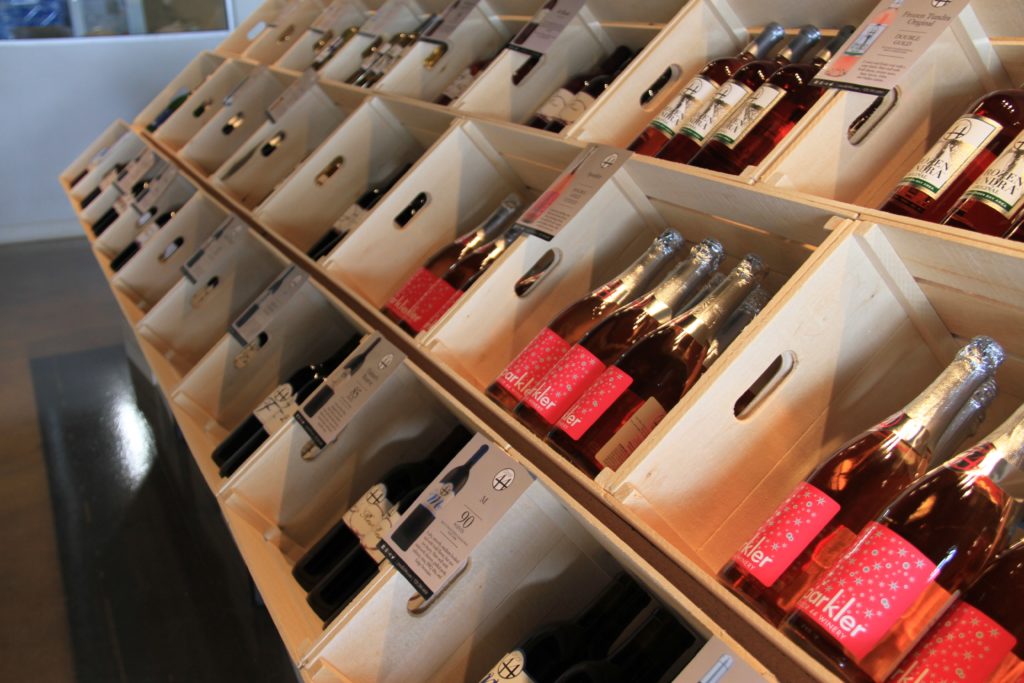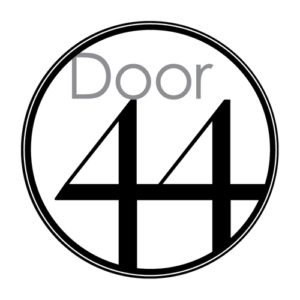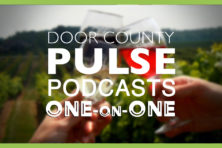Steve Johnson of Door 44 on Growing Grapes, Making Wine and Building Community in Door County
- Share
- Tweet
- Pin
- Share

We spoke with Steve Johnson, owner of Door 44 Winery, last spring when the winery had just opened the doors of its new location north of Sturgeon Bay, replacing its former location three miles south. Read on to learn more about Door 44’s history, projects and aspirations.
How did Door 44 begin?
I like to say it goes back to our honeymoon. Maria and I were in Napa Valley back in ’94, and we were at the Coppola Vineyard Winery. We were in law school, so we couldn’t afford the really expensive wine, but we found an inexpensive bottle of wine in the tasting room, grabbed a baguette and walked out in the vineyard and looked up at the sky and thought, why not Wisconsin?
We didn’t really know what we were getting into at the time, but it was something we felt compelled to do. About a decade later, we had our first vineyard and winery, and here we are 13 years later – we have this new location for Door 44.
So the wine industry was something new to you?
We have a little bit of wine in our blood. Her father came from Italy, and he and his friends would get together in his garage and make wine. And my father grew grapes in the backyard and would make wine, too, which we would have for family celebrations. We kind of understood the process, but we didn’t have any of the technical skill that you typically associate with starting a vineyard and winery.
The more people heard me talk about it, the more it sounded crazy to them. That just fueled my fire. I think there is great potential for this area. At the time, we didn’t know much about grape growing or winemaking, but as we studied it more and more, we realized the unlimited potential.
What are some of the challenges with wine in Door County specifically and Wisconsin in general?
The irony of it is, when people think of Wisconsin, they think of beer. They think of cold weather. Wine is not something that comes to your mind, but people are surprised to learn that from April to October, this line of latitude here around the 45th parallel has identical weather conditions as Bordeaux or Tuscany, which has the premium wineries of the world. So if you can plant varietals that survive the winter, you have the perfect, world-class ingredients here for wine country.
Part of the irony in this also is that there is a Wisconsin dairy farmer by the name of Elmer Swanson who is primarily responsible for any type of viticulture in the upper Midwest. He discovered that if you found the right varietals, [these were] the perfect conditions for grape growing, and through his work – basically grape breeding local wild-grape pollen with world-class varietals that we are all familiar with, like cabernet, chardonnay, merlot – we ended up with the varietals that are now being planted in this part of the world.
Tell me about the first few years.
This is the perfect example of “ignorance is bliss” because if we knew of every challenge that was going to cross our path, we would have thought, maybe there’s a better venture to get into.
But as we’ve done this, we’ve learned a great amount, and the thing about grape growing and winemaking is that you never stop learning. That’s part of what drives us: Every day there’s this opportunity to keep learning about what we’re doing, and that by nature inspires me to do this more. That’s part of the fun of this. It’s part art, part science, part intuition and a lot of sharing of information. The more growers, the more winemakers we can get to this part of the world, the faster the reputation of this area will grow.
Your wines only use grapes grown here in Wisconsin, correct?
Yeah, I guess I’m kind of a purist. To me, wine is the ultimate regional product. Wine is so expressive of the soil and climate that [the grapes are] grown in, and I always like to say that because we are both growing and making wine, you really don’t make wine as much as you grow wine.
So to continue that philosophy, to acknowledge the fact that almost every wine store is set up in a regional dimension – that just brings home the point that wine is one of the products that you have to demonstrate to people its uniqueness based on the area [where] wine is grown and made.
I know it’s a lot more work to do it this way; it’s more expensive to do it this way. And what I say to many people is, I love the tourism of this area and the attention it brings to us, but my goal is to have these types of wines available to people who don’t intend to go to Door County.
Tell me about the wine that you make.
Now that we have done this for 13 years, we have learned what varietals give us the most expressive types of wines, whether it’s an aromatic expression or the crispness that we’re looking for, so what we have really focused on is finding the right varietal for the particular situation that we’re in.
So being near the lake here, we’re looking for varietals that can ripen a little bit quicker, and we tend to make a wine that is more expressive in terms of aromatics. When a grape is slightly underripe, you get a more aromatic component and a nice, crisp backbone to that wine, which gives it great aging potential and food-pairing potential.
My philosophy is really to let the grape be itself as a wine. You can’t take a Marquette grape and make a wine that’s a deep, bold cabernet, but you can make an incredibly aromatic La Crescent that’s slightly underripe because of the cool climate it grows in, and that cannot be duplicated in California or in any other part of the world. Rather than try to mimic another part, we are just trying to say, this is what we grow; this is what it smells like, tastes like; and let it shine.

You’re a big advocate for the wine community here. Tell me about the community that’s here, and what is it like to be a part of it?
It’s great because we all have a different dimension and look to our business model, but in the end, as with any other wine region, what you’re trying to offer people is a regionally distinctive product and an environment and an experience that are something that people can remember – because in the end, you can go to the grocery store and get a decent bottle of wine for a good price.
But as a winery, you’re trying to create an experience that people connect to you, and that can be anything from the conversation you have at the tasting bar, the setting that you’re enjoying the wine in, to the food you’re having it with. So I think each one of us, as wineries here in Door County, have a different offering to give to people.
To take the Door County Wine Trail – which we are on – is really a great experience to get that full spectrum of what we have. In the end, it is just fermented grape juice, but it tends to be a product you enjoy more than just as a beverage.
Visit 44wineries.com to learn more about Door 44, and stop in to the new tasting room and winemaking facility at 5464 Cty P in Sturgeon Bay. Listen to the full podcast interview with Steve Johnson at doorcountypulse.com/podcast-how-door-county-became-a-wine-destination-with-steve-johnson-of-door-44-winery, and find all the podcasts at doorcountypulse.com/podcasts.


